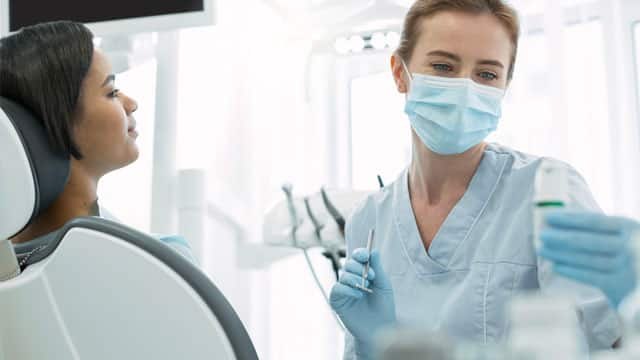While the kit does not replace professional treatment, you can use it to treat minor dental issues and alleviate or control major oral problems until you can get to a dentist. Here's how you can build a dental first aid kit.
Dental First Aid Kits
A dental first aid kit is a great way to store all your oral medical essentials in one place. The contents of your dental first aid kit should assist with the treatment of minor oral issues. Namely, toothache, canker sores, minor cuts inside the mouth, and even the first tooth falling out milestone.
What Should You Have in Your Dental First Aid Kit?
While some general items should be included in an at-home dental first aid kit, you can make your dental kit unique to your family's oral needs. For example, if you or your children have orthodontic appliances, you may want to add dental wax to assist with specific issues related to the braces.
These are the basic medical supplies that you can buy from your local pharmacy for your at-home dental first aid kit.
- Medical gloves: Wearing a pair of gloves is a good way to avoid transferring germs from the hands to the mouth while assessing or treating oral issues.
- Sugar-free gum: The inclusion of this item may surprise you, but chewing sugar-free gum helps promote saliva production and combats dry mouth.
- Moisturizing lip balm: If your dry mouth is accompanied by cracked lips, this item can do a fantastic job solving this problem as instructed on the packaging.
- Gauze pads: These can be used to clean a minor cut or wound in the mouth. You can place gauze on the tooth socket to stop the bleeding that occurs after losing a tooth.
- Ice pack: An injury to the face or tooth extraction can cause swelling. Having an ice pack on hand is an easy way to relieve pain and inflammation.
- Pain medication: Over-the-counter pain medication can reduce pain and discomfort from a toothache. Be sure to follow the on-pack instructions and consult with your dentist if this persists.
- Dental Mirror: It's often nearly impossible to see what is happening at the very back of the mouth. A dental mirror allows you to examine and treat those hard-to-see areas closely. Some dental mirrors come with a built-in light to improve visibility.
- Dental wax: Braces can irritate the inner lips and cheeks, and sometimes the bracket or wire can come undone. You can use dental wax to cover the surface of the braces and ease discomfort.
- Floss: For objects wedged between the teeth, you can use dental floss to remove them safely.
- Salt: A saltwater mix is a simple and cost-effective home remedy that can help soothe mouth sores and alleviate pain after tooth extraction.
An oral first aid kit ensures that you stay prepared for life's unexpected dental emergencies. Treating oral issues like mouth sores or a knock to the teeth with the correct items can prevent them from developing into more serious issues. The good news is you can make your own at-home dental first aid kit with a few items from your local drug store.
Oral Care Center articles are reviewed by an oral health medical professional. This information is for educational purposes only. This content is not intended to be a substitute for professional medical advice, diagnosis or treatment. Always seek the advice of your dentist, physician or other qualified healthcare provider.
ORAL HEALTH QUIZ
What's behind your smile?
Take our Oral Health assessment to get the most from your oral care routine
ORAL HEALTH QUIZ
What's behind your smile?
Take our Oral Health assessment to get the most from your oral care routine















